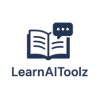In today’s fast-paced digital world, the debate of AI tools vs traditional tools has become one of the most talked-about topics. Whether it’s content creation, design, data analysis, or customer support, Artificial Intelligence (AI) is changing how we work. But are AI tools truly better than traditional ones? Let’s explore the strengths, weaknesses, and future of both approaches to understand which one suits your needs best.
Understanding AI Tools
AI tools are software applications that use machine learning, natural language processing, and automation to perform complex tasks with little or no human intervention. They analyze data, make decisions, and even create content or designs automatically. From ChatGPT and Jasper for writing to Midjourney and Canva Magic Studio for design, AI tools save time, improve efficiency, and help users achieve more with less effort.
What Are Traditional Tools?
Traditional tools refer to software or manual methods that rely heavily on human input and expertise. Examples include Photoshop for design, Microsoft Excel for data management, and manual SEO research for marketing. These tools give users full control and creativity but often require significant time and technical skill to master.
Key Differences Between AI Tools and Traditional Tools
| Feature | AI Tools | Traditional Tools |
|---|---|---|
| Automation | High automation with minimal human input | Requires manual effort and user expertise |
| Learning Curve | Easy to use with built-in guidance | Steep learning curve for beginners |
| Speed | Fast, often delivering instant results | Slower, depends on user efficiency |
| Creativity | Generates ideas but can lack originality | Offers full creative control |
| Cost | Free or subscription-based (depends on the tool) | One-time purchase or license-based |
| Accuracy | Improves over time with AI learning | Accuracy depends on user’s skills |
Advantages of AI Tools
- Time Efficiency: AI tools complete complex tasks in seconds, saving hours of manual work.
- Cost-Effective: Many AI platforms offer free plans or lower costs than hiring experts.
- Data-Driven Insights: AI tools can analyze vast data sets quickly and provide actionable insights.
- Consistency: They maintain quality and consistency across projects without human fatigue.
- Scalability: AI tools can handle multiple projects simultaneously, making them perfect for businesses.
Limitations of AI Tools
- Lack of Creativity: While AI generates content, it sometimes misses emotional depth or originality.
- Dependence on Data: AI performance depends on the data it’s trained on; poor data means poor output.
- Limited Human Touch: AI lacks empathy, humor, and the intuitive understanding humans bring.
Strengths of Traditional Tools
- Full Control: Users decide every element of design, writing, or analysis.
- Creativity and Emotion: Traditional tools empower human imagination and emotion-driven results.
- Reliability: They don’t depend on algorithms or datasets — just user skill.
Drawbacks of Traditional Tools
- Time-Consuming: Manual work takes longer to complete.
- Requires Expertise: Users must be skilled to get professional-quality results.
- Limited Automation: Few or no AI-assisted features to speed up tasks.
Which Is Better for Businesses?
For most modern businesses, the best approach is a hybrid model — combining the power of AI automation with the creativity of human input. For example, marketers can use AI for keyword research and analytics, but rely on human writers for storytelling. Designers can use AI for layout generation and then refine manually for originality. This balance offers the best of both worlds — speed, creativity, and control.
AI Tools vs Traditional Tools: Real-World Examples
- Content Writing: AI tools like Jasper and Writesonic generate blogs in minutes, while traditional writing takes hours but provides unique insights.
- Graphic Design: AI-based Canva Magic Design can instantly create visuals, whereas Photoshop allows deep customization.
- SEO Optimization: Tools like Surfer SEO automate keyword analysis, while manual SEO gives flexibility and deeper understanding.
The Future of Work: Collaboration, Not Competition
The future isn’t about AI replacing humans — it’s about AI empowering humans. AI tools are here to reduce repetitive work and free up creative potential. Traditional tools will always remain relevant for those who value craftsmanship and human touch. The real winners will be those who learn to balance both intelligently.
Conclusion
In the debate of AI tools vs traditional tools, there’s no absolute winner. Both have their unique benefits and challenges. AI tools offer speed, automation, and scalability, while traditional tools ensure creativity, control, and authenticity. For individuals and businesses, the smartest move is to combine both — using AI for efficiency and human expertise for originality. That’s the true path to sustainable growth in the digital era.
FAQs
What are AI tools used for?
AI tools are used for automating tasks like content writing, image generation, data analysis, and marketing optimization.
Are traditional tools becoming outdated?
Not completely. Traditional tools are evolving with AI integration, ensuring they remain relevant and powerful for creative users.
Can AI completely replace traditional tools?
No, AI cannot fully replace traditional tools. It complements them by enhancing speed and automation while humans provide creativity and judgment.
Which type of tools are best for beginners?
Beginners often prefer AI tools since they are easier to use and require minimal technical knowledge compared to traditional software.
